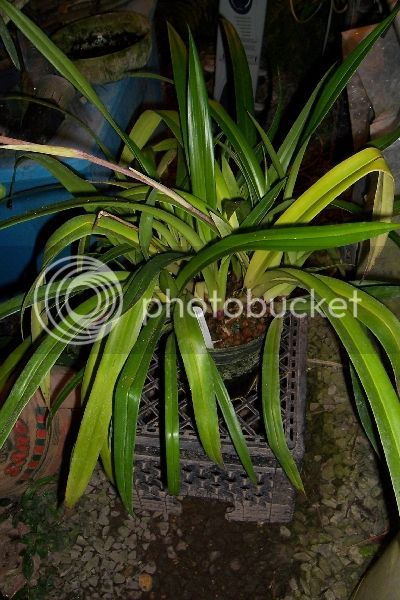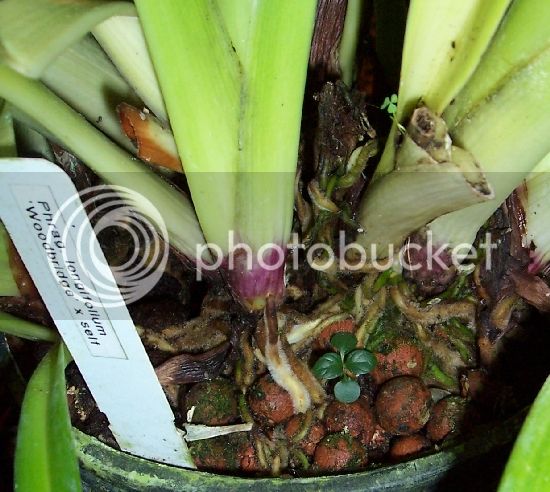Nothing would grow with 20ppm salts. Certainly not a big leafy plant.
How about 80ppm!
I've had this Phrag longifolium (also found in the Country of Origin for Selenipedium species) since about 2005. It's in the same 8" pot full of hydroton balls that it came in, but recently the pot split and roots are pouring out of the side. The pot sits in a tray of water (when not being photographed), but normally it just sucks up the water every few days so I add enough to overflow the tray to flush, and wait till its all gone for the refill.
Longest leaves are about 20", and the plant has been in continuous bud/bloom for about 2 years now. You can see some moss growing on the balls (along with weeds) and roots are obviously healthy, plenty of new growth and virtually no leaf tip burn. This would probably count as a big leafy plant.
I thought the plant was awesome before K lite, but with reduced K the leaves are about 20% longer than before, and leaf tip burn was drastically reduced.
Yes it gets fed at about 50ppm N once a week (less in winter) which has a conductivity of 300 - 500 us/cm, but the top ups and flush are with water less than 50 us/cm. This morning the sump was empty (the day after fertilizing too) so I just added enough water to fill the sump without flushing. This evening I let all the dregs from the pot drip into the sump and the conductivity is 160us/cm.
So I think you can grow great plants from Ecuador without high TDS. Judging by the improvement in quality over the last 2 years it also looks like less is more.




































